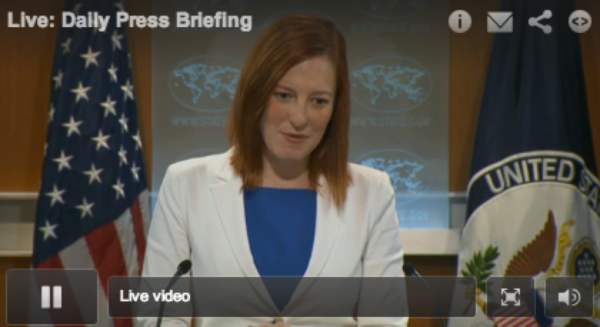US State Department: After Audit, We’ve Cut Our Facebook Spend By 90%
Mixed in with questions of about Egypt, Edward Snowden and the rerouting of the president of Bolivia’s airplane, the US State Department fielded another issue during its daily press briefing today. What’s up with spending $315,000 per year to buy Facebook likes? Answer: the budget’s now been cut by about 90%. Buying Fans As we […]

Buying Fans
As we covered earlier, and as first reported by the Washington Examiner, an audit of the US State Department’s Bureau of Information Programs found that it spent $630,000 over two years, in 2011 & 2012. From the report:
The bureau spent about $630,000 on the two campaigns and succeeded in increasing the fans of the English Facebook pages from about 100,000 to more than 2 million for each page. Advertising also helped increase interest in the foreign language pages; by March 2013, they ranged from 68,000 to more than 450,000 fans.
Buying fans can make sense, but it can also be a debatable practice. That was certainly a debate within the bureau itself, as the report notes:
Many in the bureau criticize the advertising campaigns as “buying fans” who may have once clicked on an ad or “liked” a photo but have no real interest in the topic and have never engaged further. Defenders of advertising point to the difficulty of finding a page on Facebook with a general search and the need to use ads to increase visibility.
Paying For Posts
The report also noted that the bureau, last fall, shifted toward paying for posts to have broader reach on Facebook rather than purchasing fans:
For example, a posting on cyber censorship in March 2013 reached 234,000 Facebook users on its first day; only about 20,000 would have received the item on their news feed without advertising. An item on “Women and the Web” reached the news feeds of 360,000 people; without advertising, 27,000 would have received it.
After the major advertising campaigns, the coordinator shifted the focus away from increasing total fan numbers and toward engagement, as measured by “likes,” shares, and comments. IIP has targeted the bulk of its sponsored story ads in a way most likely to boost engagement statistics.
The bureau uses Facebook’s automated system to place the sponsored story ads into the 25 countries with the largest number of young users and the highest engagement rates, regardless of the item’s content, importance, and relevance to the countries in which the ad appears. However, engagement is a means, not an end.
Recommendation To Reduce Spend
From this, the auditors recommended that bureau could reduce spending yet still have good reach by focusing on sponsoring posts rather than buying fans:
The bureau could reduce spending and increase strategic impact by focusing its advertising not on raising overall fan numbers or general engagement statistics but on accomplishing specific PD goals.
This approach would entail tying any general page advertising to the promotion of special information content on high-priority issues as well as manually selecting key items as sponsored stories and advertising them only to relevant countries and audiences.
Cuts Have Been Made
Now, a day after news about the report came out, the State Department says it has reduced that spending — dramatically. During today’s daily press briefing, state department spokesperson Jen Psaki was asked about the spending.
She replied that spending had been at $315,000 per year and now has been reduced to $36,000, about a 90% reduction. The report itself never said spending was exactly $315,000 per year — that’s the figure if you get if you assume the $630,000 in the report was spent exactly in the same amount each year, which probably wasn’t the case.
But the takeaway remains — Facebook spending by the bureau is no longer being measured in multiples of $100,000.
As for the report, Psaki added: “It was a wide ranging report, but yes, clearly we have reduced the spending and also taken steps to implement the other recommendation.”
You can catch her comments toward the end of the daily briefing for July 3, when it appears on the State Department’s video site.
Opinions expressed in this article are those of the guest author and not necessarily MarTech. Staff authors are listed here.
Related stories
